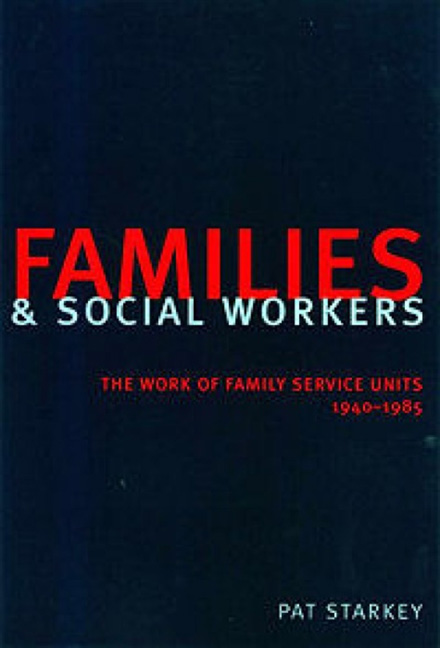Book contents
- Frontmatter
- Contents
- Acronyms and abbreviations
- Introduction
- 1 Pacifist Service
- 2 Problem Families, Eugenics and FSU
- 3 The Growth of a Social Work Agency
- 4 Changes and Adjustments
- 5 Training and Professional Development
- 6 Changing Relationships with the State
- 7 Almost Not An Organisation
- Conclusion
- Bibliography
- Index
6 - Changing Relationships with the State
- Frontmatter
- Contents
- Acronyms and abbreviations
- Introduction
- 1 Pacifist Service
- 2 Problem Families, Eugenics and FSU
- 3 The Growth of a Social Work Agency
- 4 Changes and Adjustments
- 5 Training and Professional Development
- 6 Changing Relationships with the State
- 7 Almost Not An Organisation
- Conclusion
- Bibliography
- Index
Summary
Even before the Second World War, the increasing part played by the state in the provision of welfare services since the beginning of the twentieth century had led some commentators to foresee the demise of voluntary agencies. For example, in 1937 T. S. Simey claimed that the role of the voluntary sector in social welfare would decrease in importance as the statutory sector assumed a greater prominence. He believed that the voluntary sector had a supplementary function and that it was an unsatisfactory substitute for properly organised public services. His assertion was based on the belief that voluntary societies were unable to provide services on the scale necessary to relieve the social distress that was increasingly evident in the 1930s, in part because they were incapable of securing sufficient funds to pay for the staff and equipment necessary to meet future levels of need. In addition, he believed them to be lacking in professionalism.
Simey's prophecy was only partly accurate. The structural re– organisation which resulted from the introduction of the machinery of the welfare state after 1945 increased the rate at which overall state responsibility for some forms of social welfare was assumed and had some effect on the mix of provision. It did not, however, confirm the suspicions of those who, like Simey and Lady Allen of Hurtwood, believed that British society had outgrown the need for philanthropic activity. In Nicholas Deakin's words, it changed ‘the size and shape of the space within which the voluntary sector had to operate’, but the picture was not clear-cut. Many modifications to areas of responsibility did not result directly from the formal introduction of the post-1945 measures, nor were some changes as dramatic as has sometimes been assumed. Government intervention in welfare issues, particularly if measured by public expenditure, had grown rapidly during the inter-war years while all sections of the voluntary sector experienced financial difficulty, but in spite of their financial problems and the possibility of a changing relationship with the state, voluntary agencies retained their autonomy. To some extent they were, even if some failed to realise it, in a strong position in relation to the statutory provision of social services and had the explicit support of the new Labour administration.
- Type
- Chapter
- Information
- Families and Social WorkersThe Work of Family Service Units 1940–1985, pp. 174 - 211Publisher: Liverpool University PressPrint publication year: 2000



